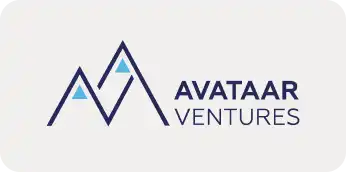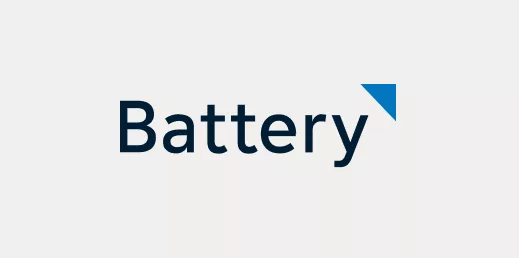
There is a storm brewing and it answers to the name ‘AI’. Are SaaS companies in general, and Indian SaaS companies in particular, ready to face the Al apocalypse?
“I am scared”
Not the kind of words you would expect from one of India’s most celebrated SaaS founders. A person at the helm of a startup that has thousands of employees is a unicorn many times over and has well over $100m in ARR.
But the man at the other end of the phone line had a point.
As we celebrate the seemingly inexorable rise of India SaaS and look towards a glorious future propelled by a trillion-dollar dream, there is now, more than ever, reason to temper these celebrations.
The reason is AI.
It is true that AI is a transformative technology. It is true that AI is a massive platform shift. But it is equally true that AI is a massive threat to the world of SaaS as we know it. Why so?
This time, it’s really different
Almost everyone agrees that the “age of AI” is upon us. A platform shift that opens up unprecedented opportunities and possibilities for nimble ambitious companies.
Software ate the world. SaaS ate software. And now, AI will eat SaaS.
But this shift is different.
In all the previous shifts, the ‘market expanded with disruptive startups leading the way.
When software started eating the world, it effectively replaced inefficient manual processes with faster and more efficient digital alternatives.
When SaaS ate software, it lowered the entry barrier and allowed any company and individual to access software capabilities that were previously available only to large companies with large budgets.
On the other hand, AI might not follow the same pattern. There is a real risk that AI will decimate SaaS as we know it.
Why so?
A thousand words would struggle to describe the challenge as eloquently as one image would – take a look at the graphic below:
If you are arithmetically inclined, you could count nearly 15,000 funded SaaS startups in this single image – all of them jostling for a piece of the martech (marketing technology) pie.
There are a hundred other images like this – one for each SaaS market. Every single image is a blur of logos.
What happens when each market segment is crowded to the rafters like this? There is a race to the bottom.
Let’s plumb the depths of this sinkhole.
There are three paths to the SaaS apocalypse.
The Death of the traditional SaaS business model
SaaS was heralded as the greatest business model that the world has ever seen. Zero distribution cost. Zero marginal cost. Incredible margins.
But the sad reality is that, as an industry, SaaS has not lived up to these lofty expectations. While the overall SaaS industry has increased 10x over the last 15 years, it has largely remained unprofitable. A recent study by Thoma Bravo revealed that the average-scaled SaaS company has a 71% average Gross Profit Margin but deeply negative Net Margins (EBITDA).
The main culprit?
Sales and marketing expenses. Every dollar of revenue requires 75 cents of marketing spend. So even before you provision for the cost of research and development and other corporate expenses, you are already in the red.
Over the past decade, the bar and effort for creating a SaaS MVP has fallen so low that pretty much every niche became overcrowded with a slew of competitors fighting for a piece of the pie and investing heavily in sales and marketing.
The emergence of AI exacerbates the challenges around the SaaS business model in two ways. The high compute costs for training and inference depresses gross margins.
The adoption of outcome-based pricing models disrupts traditional SaaS equations around CAC and LTV. “Purchasing” growth and sacrificing profitability is no longer an acceptable way to do business.
The Death of the VC-fuelled growth model
The other reason for the demise of the original SaaS promise was the glut of capital that entered the market in the ZIRP years.
Capital was cheap to the point of being seen as free. Not only did VCs raise huge funds, they foie-grassed startups with funding setting in motion a vicious cycle of heavy funding leading to heavy investments in sales and marketing besides raising headcount indiscriminately.
AI is the proverbial last nail in the coffin of the capital-heavy, VC-subsidized SaaS model.
In the age of AI, companies will adopt a barbell strategy towards capital. There will be a handful of foundational AI companies that will raise huge capital to build frontier models and other similar rails (the likes of OpenAI, Anthropic, and Mistral). Every other company will stand on the shoulders of these giants and be extremely capital-light.
This new normal will be companies that don’t optimize for vanity metrics such as funding and headcount but will instead have small teams, raise little to no funding, and build highly profitable businesses with early and sustained cash flows.
Essentially, AI will supercharge small teams. These capital-light companies will exist in the liminal space between bootstrapped and the starting line of the VC food chain. They may raise dollars to get off the ground but will build businesses that generate cash flows quickly and profitability and then prioritize capital efficiency as they grow. You can already see early winners such as Midjourney, Heygen, and Harvey that are either completely bootstrapped or have raised small funding rounds but have nevertheless scaled to tens and hundreds of millions of ARR in the span of a year or two.
The Death of startup velocity advantage against incumbents
The AI platform shift is markedly different from previous pivotal technology shifts in one more way.
In previous shifts such as mobile and cloud, startups had a distinct advantage of speed and nimbleness over legacy incumbents who were chained to the past and struggled to adapt to new models and markets.
However, in the age of AI, prima facie startups don’t seem to have the same advantage.
Pretty much every large incumbent, from Microsoft and Google to Adobe and Salesforce, has been quick to ‘upgrade’ itself to being AI-centric and slam down the shutters on startups aspiring to emerge as disruptive challengers. The fact that these behemoths also have access to vast troves of proprietary data and already have deep distribution networks makes it difficult, if not impossible, for startups to challenge them meaningfully in an AI-centric future.
While these aspects render the possibility of an AI-triggered global SaaS apocalypse all too real, Indian SaaS startups are particularly vulnerable to the storm that is coming.
How so?
The Death of the Indian SaaS playbook of desktop selling
Traditionally, Indian SaaS startups have followed a simple but hitherto effective playbook.
To start with, they invest heavily in SEO – targeting high-volume keywords that potential customers use to search for solutions to their problems. As these startups reach some scale, they invest in Google Ads and Search Engine Marketing (SEM) to increase the surface area of their marketing reach.
Once a prospect comes into the door, they leverage lower-cost, high-touch customer success teams to convert them into paying customers. Beyond this initial sale, Indian SaaS startups adopt a “land and expand” model to sell deeper into existing customers by iteratively increasing the size of the wallet by upselling additional seat licenses or higher-value plans and increasing the slice of the wallet by cross-selling additional or adjacent products from their portfolio.
This playbook stands the risk of being completely decimated in the age of AI.
AI will catalyze a secular shift towards usage-based models and outcome-based pricing that hurts the core India SaaS tenets of inexpensive “land and expand” GTM motions, positive “net retention rates” and “seat-based” pricing models that SaaS startups depend on for justifying high customer acquisition costs no longer hold value. The challenge here is not just tactical and short-term but strategic and fundamental – AI’s core promise is automation and efficiency – implying that fewer people will be able to do more work in a faster and cheaper manner. The original “seat-based” pricing model requires customers to progressively add more and more licenses as they ramp up manpower – in an AI-centric world, this motion will be reversed as AI eats manual work bit by bit.
The Death of the Indian SaaS “fast follower” model – there is no silver medal
In the case of many Indian SaaS startups, unoriginality is a feature, not a bug. There are only a handful of Indian SaaS startups that have emerged as category creators or even merely operating from first-principles thinking. The accepted “safe” model is to be a fast follower and emulate an incumbent leader with a solution that is largely indistinguishable from the original but available at a lower cost.
While one could complain about this strategy philosophically, from a practical standpoint, this model is a perfectly valid and proven model with dozens of fast-follower Indian SaaS startups scaling to tens of millions of dollars in ARR.
AI puts this model at risk.
In the emerging agent-centric world of AI co-pilots and auto-pilots, most markets are likely to coalesce into “winner takes all” constructs around a set of “best-of-breed” winners. There is no place likely to be available for second-place aspirants – there is no silver medal. For Indian SaaS companies to win in this environment, they have to emerge as the top dogs in their respective categories and cannot be content with second places. This is a huge philosophical change that is likely to be tricky to traverse.
The final chapter is still to be written…
While all these aspects might seem apocalyptic and the portents dire, it is not the end of the India SaaS story. Not just yet.
A brave new world is coming and as always, there will be new winners and new losers.
Every dark cloud has a silver lining and the trick here is to recognize that AI is a double-edged sword that can hurt as much as it can harm.
The need of the hour is to first recognize that AI is as much of an existential threat as it is a once-in-a-generation opportunity.
Like the aforementioned unicorn founder, it is perfectly okay to be scared. We need to channelize that nervous energy into bold and original bets that capture the AI zeitgeist better than anyone else. We need to move beyond the traditional models and playbooks – these may have served us well in the past but they have no role and relevance in an AI-first future.
We need to temper ambitions with honesty – while numerous opportunities beckon in the world of AI, the risk of being rendered obsolete overnight is real. We need to gird our loins and prepare for the storm that is coming. Only then can we forge a brave new path both individually as SaaS operators/founders and collectively as the Indian SaaS ecosystem.
Indian SaaS is dead. Long Live Indian SaaS.AI.
Editorial Note: The views and opinions expressed in this post are those of the contributor and do not necessarily reflect the view or position of SaaSBoomi. A cohort of more than 100 AI-first Indian startups is convening in Bangalore on June 7th for a 3-day workshop that will prepare us better for the future. If you would like to be part of this program, apply here.
























